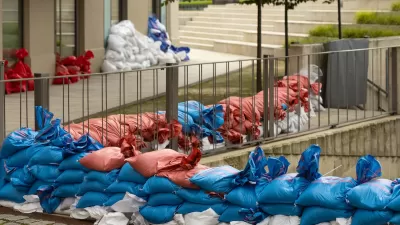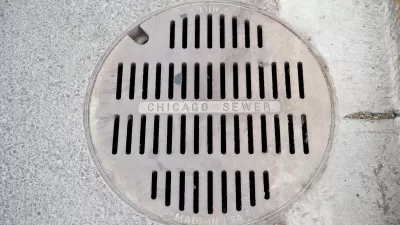Recent floods in Texas, especially prevalent in Houston, reflect a stormwater infrastructure that both worked as it's designed and is in need of improvements.
"Like a lot of residents of the Houston area, local highway officials just had to let water do its thing when it came to clearing some local highways during recent rains," according to an article by Dug Begley.
Begley quotes Karen Othon, spokeswoman for the Texas Department of Transportation (TxDOT) Houston office, directly in explaining last week's massive flooding across Texas: "With the detention ponds and bayous full, there was nowhere for the water to go."
"After the waters receded, transportation officials said they believed that inlets and pumps that keep freeways from flooding worked, except in certain flood-prone spots that had not undergone significant repairs. However, the heavy rains were a little more than the systems could handle."
The flooding, as innocent as these explanations makes it seem, wreaked havoc on commutes and property left inundated as the rains fell and the region's stormwater infrastructure struggled to keep up. As explained in the article, however, the top priority for the region's infrastructure is to keep homes clear of the flooding—not roadways. Othon also told Begley that planned highway improvements underway by the TxDOT will correct many of the problem flooding encountered in recent storms.
FULL STORY: Road flooding a reality in heavy Houston rains

Trump Administration Could Effectively End Housing Voucher Program
Federal officials are eyeing major cuts to the Section 8 program that helps millions of low-income households pay rent.

Planetizen Federal Action Tracker
A weekly monitor of how Trump’s orders and actions are impacting planners and planning in America.

Ken Jennings Launches Transit Web Series
The Jeopardy champ wants you to ride public transit.

Washington Legislature Passes Rent Increase Cap
A bill that caps rent increases at 7 percent plus inflation is headed to the governor’s desk.

From Planning to Action: How LA County Is Rethinking Climate Resilience
Chief Sustainability Officer Rita Kampalath outlines the County’s shift from planning to implementation in its climate resilience efforts, emphasizing cross-departmental coordination, updated recovery strategies, and the need for flexible funding.

New Mexico Aging Department Commits to Helping Seniors Age ‘In Place’ and ‘Autonomously’ in New Draft Plan
As New Mexico’s population of seniors continues to grow, the state’s aging department is proposing expanded initiatives to help seniors maintain their autonomy while also supporting family caregivers.
Urban Design for Planners 1: Software Tools
This six-course series explores essential urban design concepts using open source software and equips planners with the tools they need to participate fully in the urban design process.
Planning for Universal Design
Learn the tools for implementing Universal Design in planning regulations.
Heyer Gruel & Associates PA
Ada County Highway District
Institute for Housing and Urban Development Studies (IHS)
City of Grandview
Harvard GSD Executive Education
Toledo-Lucas County Plan Commissions
Salt Lake City
NYU Wagner Graduate School of Public Service





























